|
Handbell Notation Symbols & Definitions |
|
| Need a quick reference guide or a teaching tool for the current Handbell, Solo, or Ensemble notations? We offer Handbell and Solo/Ensemble notation sheet lifters that are designed to fit in your music notebook and a Handbell notations poster that measures 20" x 26". |
|
 |
Brush Damp |
A BD indicates that a ringing handbell is brushed downward against the chest resulting in a sudden reduction of volume. This technique may be used when a soft ring follows a loud ring with the same handbell(s). The effect simulates a forte-piano. |
 |
 |
Controlled Diminuendo |
The CD is executed after ringing a handbell, particularly a large handbell, slide a gloved hand or finger(s) up the outside of the handbell toward the rim of the casting. Varying degrees of pressure will control the diminuendo. An explanatory footnote may be used. |
 |
 |
Damp Sign |
The Damp Sign indicates the cessation of sound in LV passages. |
 |
 |
Echo |
To perform the Echo technique, the handbells are rung on beat one and then lightly but precisely touched to the padded table on the counts indicated. |
 |
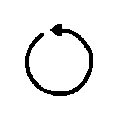 |
Gyro |
To execute a Gyro, ring the handbell, while holding in the vertical position slowly rotate the handbell to produce a slight vibration in sound. |
 |
 |
Belltree |
Belltree: 3 or more bells with interlocked handles. |
 |
 |
Handbells |
|
 |
 |
Handchimes |
|
 |
 |
Hand Damp |
HD is used with large handbells. When one or tow fingers on the casting are insufficient to produce the desired staccato effect, either hand may be placed on the outside of the handbell casting as the handbell is rung. This technique is also useful when a staccato note quickly follows a rung or vise-versa. |
 |
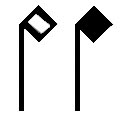 |
|
Notehead Shape used for a handchime part to distinguish it from a handbell part when both are notated on the same staff. |
 |
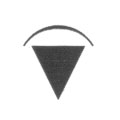 |
Hand Martellato |
A martellato with the hand on the outside of the handbell casting instead of on the handle. |
 |
 |
Let Vibrate |
LV is a term meaning Let Vibrate or Laissez Vibrer, allowing handbells to resonate regardless of note values or rests until damping is indicated. LV if placed above the treble or below the bass staff, applies to that staff only. An LV centered between staves applies to both staves. |
 |
 |
Mallets |
The Mallet technique can be used either on a suspended handbell held by the handle and struck with a mallet or a handbell that is resting on a padded table and struck with a mallet. |
 |
 |
Mallet On Suspended Handbell |
A  indicates that a suspended handbell is held by the handle and struck with a mallet. Handbells struck in this manner are generally not damped. indicates that a suspended handbell is held by the handle and struck with a mallet. Handbells struck in this manner are generally not damped. |
 |
 |
Mallet With Handbell On Table |
The  indicates that the handbell is resting on a padded table and is struck with a mallet. indicates that the handbell is resting on a padded table and is struck with a mallet. |
 |
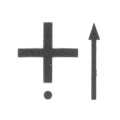 |
Mallet Lift |
A Mallet Lift is executed by lifting the handbell immediately after striking it. |
 |
 |
Mallet Roll On Suspended Handbell |
A Mallet Roll is similar in technique to a drum roll. Using a mallet in each hand, the ringer rapidly and repeatedly strikes the handbell with mallets while the handbell is held by the handle. |
 |
 |
Mallet Roll With Handbell On Table |
A Mallet Roll is similar in technique to a drum roll. Using a mallet in each hand, the ringer rapidly and repeatedly strikes the handbell with mallets while the handbell is resting on a padded table. |
 |
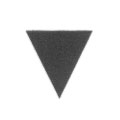 |
Martellato |
Martellato indicates the handbell is rung by holding it by the handle and gently striking the full body of the handbell horizontally on a properly padded table. |
 |
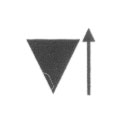 |
Martellato Lift |
Martellato Lift indicates the martellato followed by immediately lifting the handbell to allow the sound to continue. |
 |
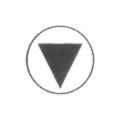 |
MutedMartellato |
A Muted Martellato is a technique used primarily in solo ringing. It is executed by placing one or two fingers on the casting of the handbell while gently striking it on the table. |
 |
 |
Optional Notes |
Optional Notes are written as stemless solid notes in the same size as the required notes. They are designated by a longitude bracket and the word optional or opt.. |
 |
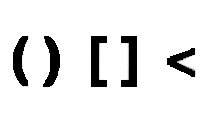 |
Enclosures For Optional Notes |
|
 |
 |
Pluck |
Pl indicates the "plucking" technique. Handbells are placed on a padded table and sounded by moving the clapper manually. |
 |
 |
Pluck Lift |
To execute a Pluck Lift, pluck the handbell in normal fashion and immediately lift it from the padded table so it continues to sound. |
 |
 |
Ring |
R indicates the normal manner of ringing and damping according to note values. Also, the use of R indicates a return to the normal ringing and damping technique after a passage when other style or technique (such as LV or Pl) has been used. It is understood that handbells are to be rung in normal fashion at the beginning of a piece without the use of the symbol R. |
 |
 |
Rim Brush |
A Rim Brush is performed by ringing notes on beat one, positioning horizontal over the table on beat two, then dragging toward the ringer across the table on beat three. |
 |
 |
Ring Touch |
RT indicates that a handbell is rung close to the shoulder with an immediate touch of the handbell to the shoulder to stop the sound. |
 |
 |
Rolled Chord |
A Rolled Chord may be produced by ringing the notes of the chord in rapid succession from low to high rather than sounding the notes simultaneously. |
 |
 |
Selective Damp For Chord Tones |
The Selective Damp symbol indicates that only the handbells represented by the cue-size notes should be damped. A damp sign incorporated in the stem of a chord indicates the selective damping of that chord. |
 |
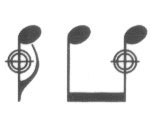 |
Selective Damp For Single Note |
The Selective Damp symbol indicates that only the handbells represented by the cue-size notes should be damped. A damp sign incorporated in the stem of a single full-size note indicates the selective damping of that note. |
 |
 |
Shake |
The Sk symbol indicates the rapid shaking of a handbell with the clapper striking both sides of the handbell. |
 |
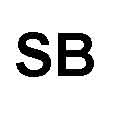 |
Singing Bowl |
The SB is accomplished by using an 8 inch wooden dowel of at least 1 inch in diameter or more, and covered either with suede or leather or dipped in a plastic coating. The rubberized shaft/handle of some of the larger bell mallets also works well. Lightly tap the lip of the bell to start the sound, then, quickly rub the rim of the bell with the stick in a clockwise motion to begin the "singing." Some degree of pressure is required. For more information, visit the internet and search for "singing bowl."
Soft suspended mallet rolls may be used in place of SB, if necessary. |
 |
 |
Swing |
SW indicates a full-arm swing after ringing the handbell. SW and/or arrows are used to indicate swings. Arrows should be synchronized with the beats on which the swings occur. Numbers may be used to specify the beats on which the swings are made. |
 |
 |
Thumb Damp |
TD indicates that the thumb of the hand holding the handbell is placed on the outside of the handbell casting, producing a stopped sound when the clapper strikes the handbell. The addition of one or two fingers on the casting for all but the smallest handbells may be necessary to achieve a completely stopped sound. |
 |
 |
Table Land Damp |
To achieve a TLD, damp the handbell by pressing it mouth-down into a padded table on a given beat. This technique may not be possible on handbells with clappers projecting beyond the lip of the handbell. An explanatory footnote should be used. |
 |
 |
Tap Pluck |
Tpl indicates that the handbells are placed on a padded table and sounded by tapping the clapper downward with the thumb. |
 |
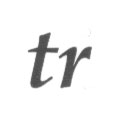 |
Trill |
A tr indicates alternating the ringing of two handbells of adjacent pitches. The simultaneous shaking of two handbells of adjacent pitches is often used to simulate a trill. In handbell notation both pitches may be notated. |
 |
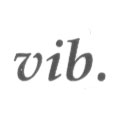 |
Vibrato |
To achieve the vib. effect, ring the handbell, gently move the handbell from side to side using the wrist, not the arm, to produce a wavering sound. |
 |
 |
Voice Leading Lines |
The movement of any voice, melody, or other line from one staff to another may be clarified by the use of voice-leading lines. When possible, the voice-leading lines should extend from notehead to notehead. For additional clarity, rests may be added. |
 |
| The above information is based on the standard Handbell Notation developed under the auspices of The American Guild of English Handbell Ringers, Inc. |
|